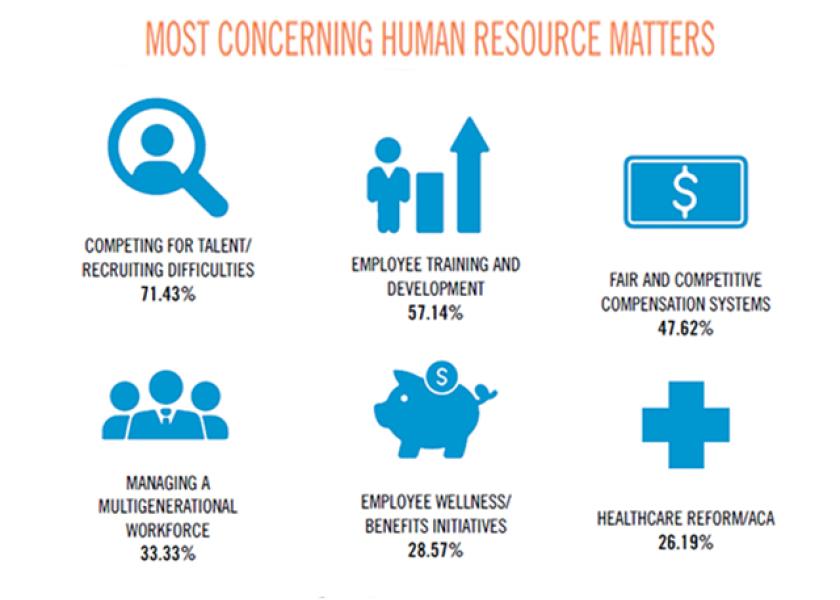Agribusiness Workplace Trends: How Does Your Company Compare?

With unemployment in the U.S. at 4%, the job market is competitive. This is especially true for agricultural jobs, as the Corn Belt and Great Plains states have some of the lowest unemployment rates in the country.
What trends are emerging in this tight labor market? The latest edition of the Agribusiness HR Review by AgCareers.com shows competing for talent is a challenge and companies are exploring new recruitment methods to attract and retain good employees.
Here are a few of the highlights from the report.
Top Challenges
What are the most concerning human resource matters?
- Competing for talent
- Employee training and development
- Fair and competitive compensation systems
- Managing a multigenerational workfoce
- Employee wellness/benefits initiatives
Recruiting
- The top recruiting challenge is applicants not having required skills
- Hourly/non-exempt positions are the most difficult position to recruit.
- More than 80% of companies use social media for recruitment efforts—up 12% from 2017
- Facebook remained as the top social media site used for recruiting efforts.

The top 5 methods of attracting prospective applicants are:
- Employee Referrals & Networks (79%)
- Corporate Website (68%)
- College / University Recruiting (58%)
- Industry Specific Job Boards (e.g.: AgCareers.com) (57%)
- General Online Job Boards (e.g.: Careerbuilder.com) (55%)

Employee Turnover
- 45% of employers reported turnover of 10% or less, while 37% reported turnover between 10% to 20%, and 18% reported turnover of greater than 20%.
- The number of weeks it took to replace employees varied by position and level of accountability. In general terms, the executive level roles took more than 12 weeks to be filled, while middle management and salary/exempt staff was generally 4 to 6 weeks. Sales roles took between 6 to 8 weeks to be filled. Hourly/non-exempt staff replacement was typically between 2 and 4 weeks.
- In the next 12 months, 33% of companies reported they expect to fill 10 to 50 job openings.
- Most participants anticipate between 1% and 5% of the workforce to retire within the next 1 to 5 years.
Workplace Diversity
- Survey participants reported that 26% of their workforce is female. But, 57% indicated the proportion of female workforce has increased in the past 5 years.
Employee Development
- Onboarding programs are in place with 76% of the participating companies. Of those with onboarding programs, 57% indicated their onboarding program is less than 30 days, 85% note they utilize hands-on training, 55% said they use job shadowing and 51% use cross training.
- 82% of companies determine the amount spent on training for employees on an as needed basis. The average spent on training per employee was $1,740.
- 54% of participants have succession planning in place, while 29% of companies have no career advancement policy initiatives in place.
Engagement and Retention
- To keep employees challenged and productive in their roles, 75% of respondents have a bonus system in place.
- Other approaches to motivate employees included training and development (68%), promotion (61%), and notably succession/career planning (45%).
- Around 40% of companies have adopted a flexible staffing approach, a 14% increase from 2017. Flexibility in schedule was the most common approach among agribusiness companies (53%). An equal number of respondent companies allowed employees to work from home or employed part-time staff (both 40%).

The 2018-19 Agribusiness HR Review includes contributions from 84 agribusiness companies.







